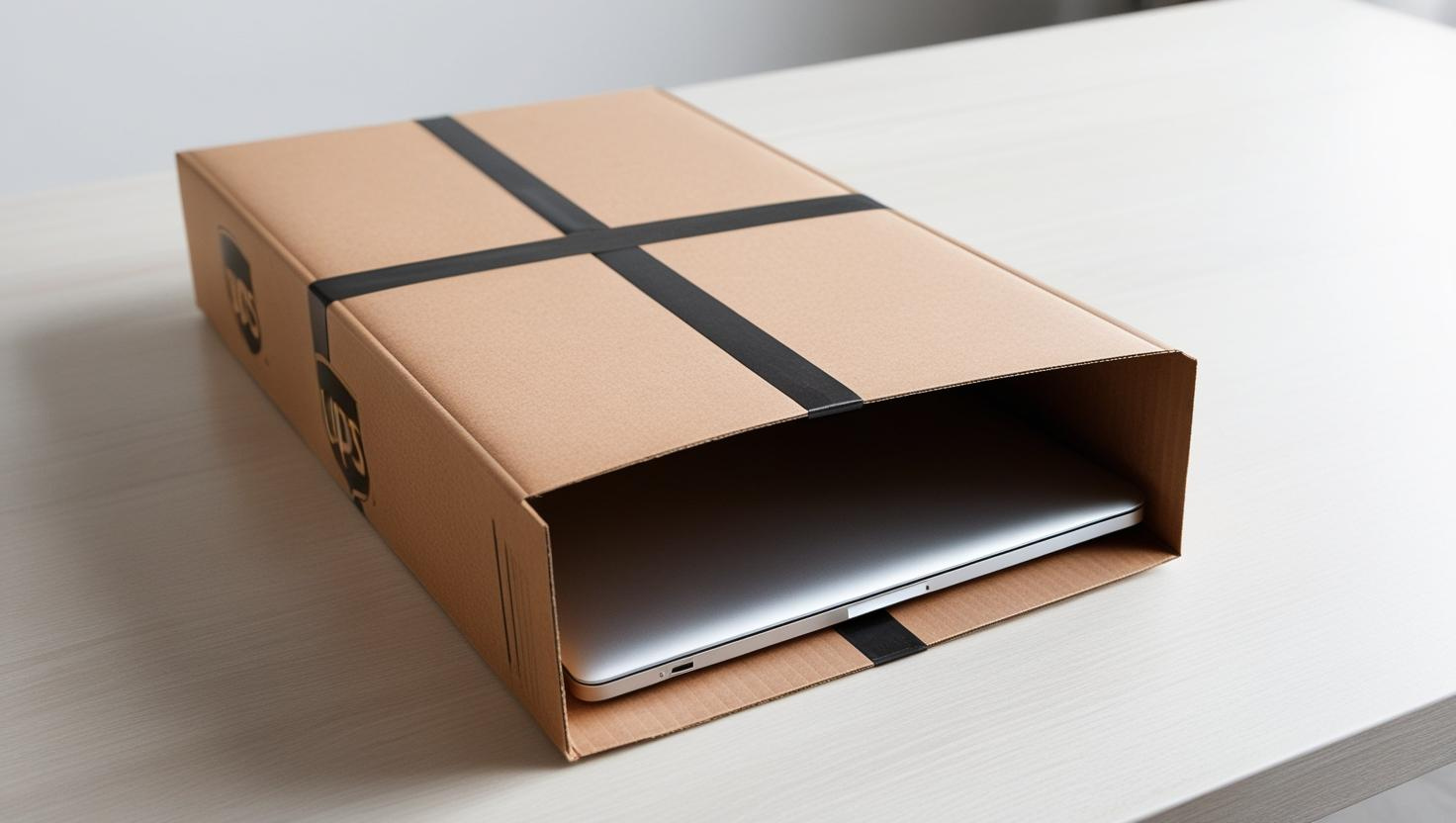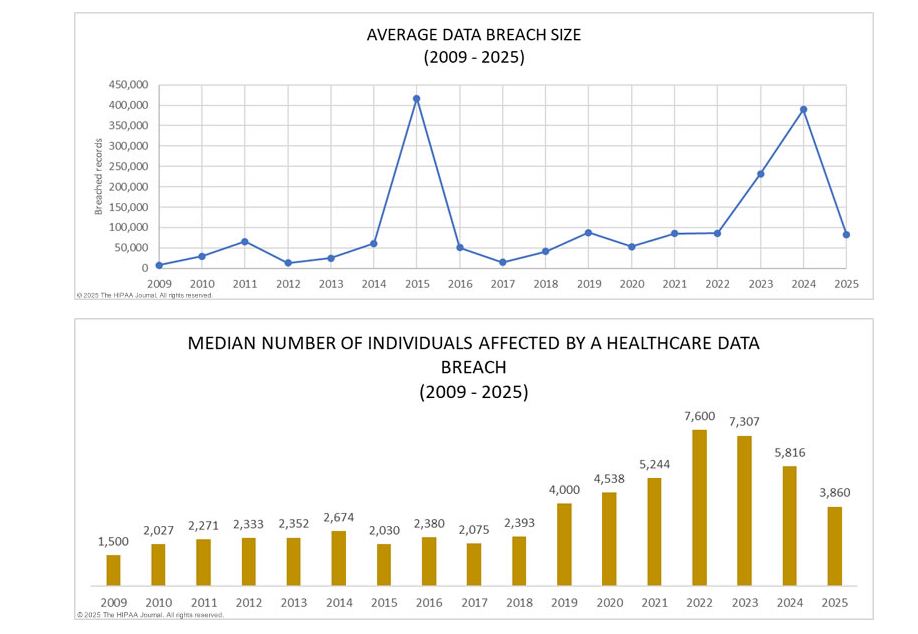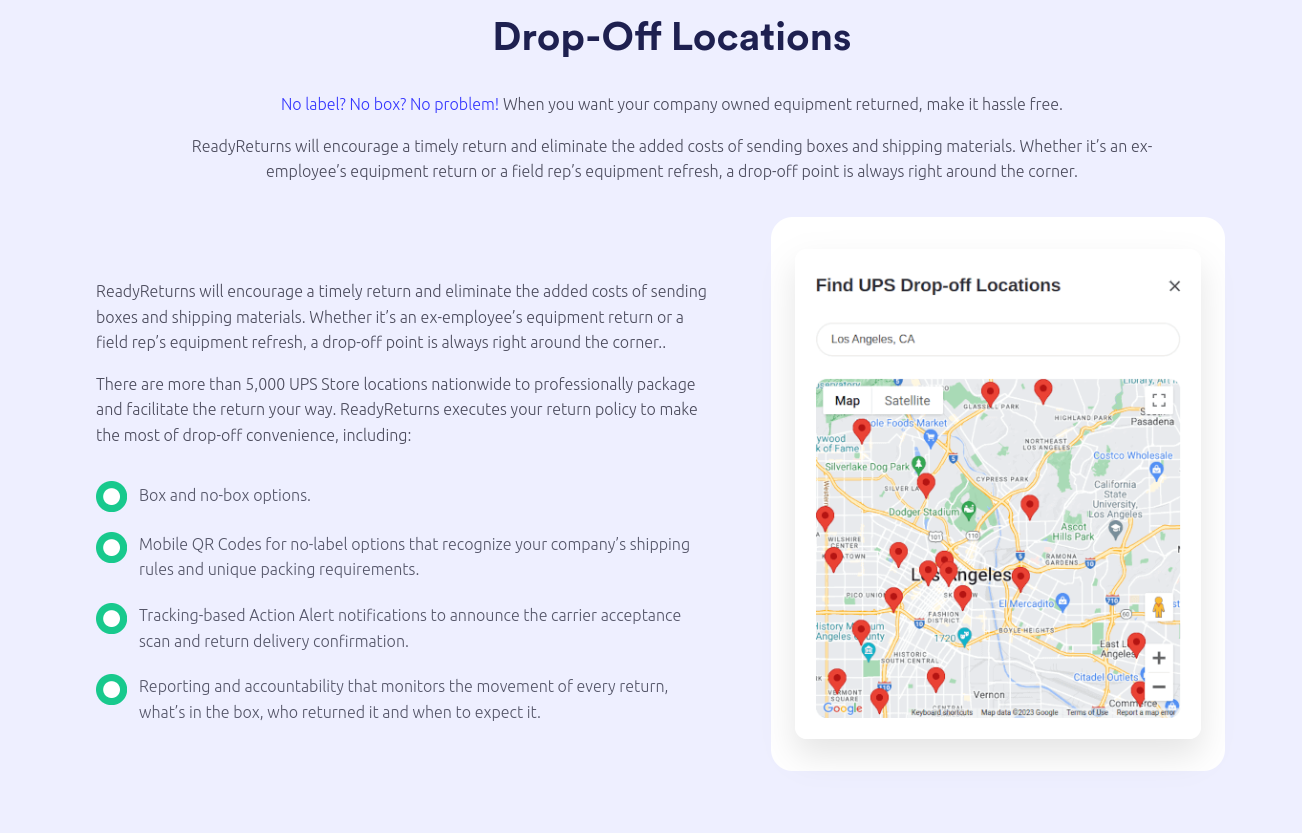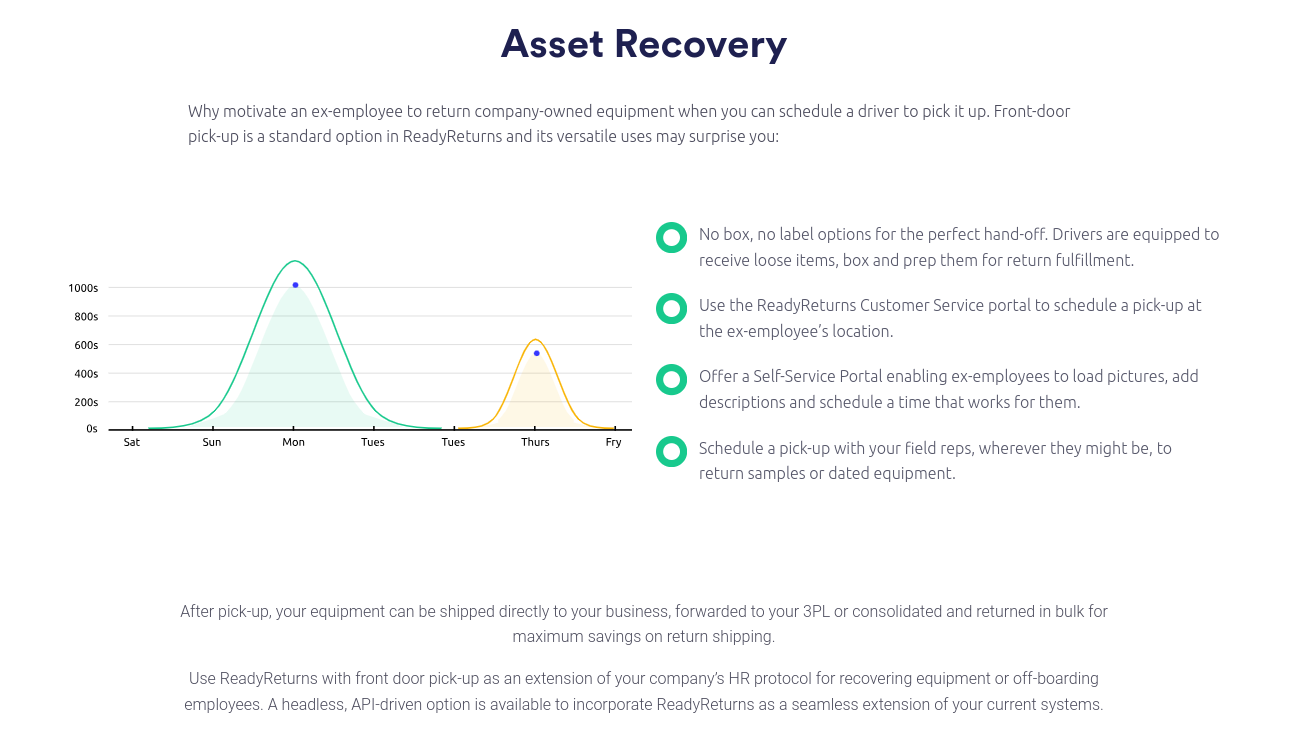How Healthcare Asset Management Software Supports HIPAA Compliance and Operational Efficiency

In healthcare, even the smallest oversight can have serious consequences. Hospitals, clinics, and medical facilities rely on hundreds, sometimes thousands, of physical assets to treat patients, manage data, and maintain compliance with industry standards. Losing track of just one device that contains sensitive patient information can lead to data breaches (there were 174 million Americans affected by healthcare data breaches in 2024 alone), fines, and damaged reputations.
 This is where healthcare asset management software like ReadyCloud comes in. It provides a secure, scalable solution for tracking physical devices, ensuring accountability, and most importantly, supporting HIPAA compliance. As medical organizations grow and digital infrastructure becomes more complex, the need for reliable asset tracking has never been greater.
This is where healthcare asset management software like ReadyCloud comes in. It provides a secure, scalable solution for tracking physical devices, ensuring accountability, and most importantly, supporting HIPAA compliance. As medical organizations grow and digital infrastructure becomes more complex, the need for reliable asset tracking has never been greater.
| Features & Benefits | FedEx Asset Return Program | ReadyCloud Asset Return |
| Ease of Use | ❎ Moderate: Requires packaging & manual label creation. | ✅ High: Automated workflows, intuitive platform. |
| Employee Convenience | ✅ Good: Accessible FedEx drop-off points. | ✅ Excellent: Simple, automated return process. |
| Real-time Asset Tracking | ❎ Limited: Basic tracking with delays possible. | ✅ Advanced: Instant visibility & notifications. |
| Integration with Existing Systems | ❎ Minimal: Limited integration options. | ✅ Comprehensive: Full integration capabilities. |
| Cost Transparency | ❎ Moderate: Hidden costs, variable fees. | ✅ High: Predictable, transparent pricing. |
| Scalability | ❎Limited: Complex management at high volumes. | ✅ Excellent: Easily scalable, regardless of size. |
| Employee Offboarding Support | ❎Basic: Manual follow-up required. | ✅ Robust: Automated alerts, simplified retrieval. |
| QR Code Support | ✅ Available (via third-party at extra cost). | ✅Included: Fully integrated at no extra fee. |
| Workflow Automation | ️❎ Minimal: Mostly manual processes. | ✅ High: Automated, customizable workflows. |
| Hidden Costs and Fees | ✅ Yes: Packaging, labels, QR subscription fees. | ✅ None: Transparent costs, no hidden fees. |
| Customer Support | ✅ Standard support available. | ✅ Exceptional: Dedicated onboarding & assistance. |
✅ Overall Winner: Clearly, ReadyCloud Asset Return offers unmatched benefits, making it the obvious choice for businesses serious about simplifying and optimizing asset returns.
The Real Costs of Poor Asset Tracking in Healthcare
Untracked or poorly managed assets create significant problems. From lost medical devices to delays in treatment, the inefficiencies caused by disorganized asset management can compromise both patient care and operational budgets. What’s more, mismanaged assets expose organizations to risks like theft, data loss, and HIPAA violations.
Consider a diagnostic laptop containing thousands of patient records. If it goes missing and hasn’t been encrypted properly, that single device could lead to millions in fines and permanent damage to patient trust. Reports have shown that hospitals lose tens of thousands of dollars every year due to misplaced or stolen equipment. These costs don’t account for the compliance and legal penalties that often follow.
Healthcare asset management software offers a smarter approach. Rather than relying on spreadsheets or manual logs, automated systems keep real-time records of asset location, status, and user activity. It removes the guesswork and builds a chain of accountability.
What Is Healthcare Asset Management Software?
Healthcare asset management software is a digital solution designed to track and manage physical assets within a medical facility. These assets can include everything from infusion pumps and imaging machines to mobile workstations and encrypted laptops. The goal is simple: to ensure that every piece of equipment is accounted for, secure, and functioning properly.
Unlike manual tracking, this software works in real time. It updates the location and status of assets instantly, showing who checked out a device, when it was last used, and whether it’s due for maintenance. This visibility is critical for fast-paced environments like hospitals, where delays and errors can impact patient outcomes.
Another key benefit is the automation of compliance tasks. Healthcare asset management software can keep detailed logs, manage offboarding, and trigger alerts for unreturned or missing equipment. This not only improves operational efficiency but also plays a vital role in maintaining HIPAA compliance.
How Healthcare Asset Management Software Helps Ensure HIPAA Compliance
HIPAA compliance is about more than just protecting patient data on the cloud. It also involves safeguarding the physical devices that access or store that data. Lost, stolen, or mishandled hardware often leads to the kind of breaches that attract heavy scrutiny from regulators.
Here’s what you need to know: asset tracking software healthcare tools provide built-in protections that align directly with HIPAA standards. These include access control features, audit logs, device encryption management, and offboarding workflows.
For example, when an employee leaves the organization, healthcare asset management software ensures their assigned devices are returned promptly. If the device isn’t returned, administrators receive alerts and can remotely lock or wipe it if necessary. This process reduces the chance of unsecured patient data falling into the wrong hands.
Chain-of-custody logs are another essential feature. These logs show exactly who had which device, when, and for how long. In the event of a HIPAA audit, having this information readily available can demonstrate that your organization is taking data security seriously.
What’s more, real-time dashboards and reporting tools help identify trends and anomalies. If a laptop assigned to a physician starts moving between unexpected locations or goes offline for an extended period, administrators are alerted. These proactive measures prevent breaches before they happen.
Key Features That Support Security and Compliance
The right healthcare asset management software will come with specific features designed to support compliance, safety, and productivity. Here are the most critical ones:
Automated Check-in/Check-out Tracking
Every time an asset is checked out, the system logs who took it and when. This data helps prevent loss and creates accountability.
Chain-of-Custody Logs
This audit trail becomes essential when dealing with security incidents or regulatory inspections. It shows a clear, unbroken record of every device’s movement and usage.
Secure Offboarding Tools
During employee offboarding, the software automatically flags all assigned equipment and tracks its return. This ensures nothing slips through the cracks.
Geo-location and Real-Time Monitoring
Administrators can view where critical assets are located at all times. Alerts can be configured for suspicious activity or if a device leaves a secure zone.
Alerts and Reporting Dashboards
Custom reports and automated alerts help staff stay ahead of asset loss, maintenance schedules, and overdue returns.
Each of these features helps close gaps that could otherwise lead to HIPAA violations or equipment loss.
Improving Workflow Efficiency Without Compromising Security
Operational efficiency is just as important as security. Doctors, nurses, and support staff need fast access to essential equipment. Long delays, missing devices, or disorganized tracking systems can waste valuable time. When the location of diagnostic equipment or mobile carts is unknown, it slows down procedures and interrupts care.
Healthcare asset tracking solutions make workflows more efficient without sacrificing data protection. Teams can use search functions to find specific devices, check availability, or assign equipment to a department. Alerts let staff know when something hasn’t been returned, which encourages faster resolution. The result is a more reliable and responsive operation.
Integration with Other Healthcare IT Systems
Healthcare asset management software doesn’t work in a vacuum. For maximum impact, it integrates with other critical systems like EHR platforms, human resources systems, and IT help desks. These integrations allow for seamless data sharing, eliminate redundant processes, and support automation.
For instance, when a new hire is onboarded in the HR system, the asset management tool can automatically assign standard devices like laptops. Similarly, when a support ticket is opened for a broken piece of equipment, that asset’s profile can be flagged for maintenance or swap out within the system.
These integrations are more than just convenient. They ensure consistency across platforms, reduce human error, and help maintain HIPAA compliance throughout the entire lifecycle of each asset. API access and configurable workflows make it possible to tailor the system to the organization’s unique needs.
Why Manual Systems Can’t Keep Up Anymore
Many healthcare facilities still use spreadsheets or paper forms to track assets. While these may seem simple, they are prone to errors, data loss, and lack of visibility. In high-volume environments, these old methods fall apart quickly.
Manual systems require significant staff time to update and verify. If a device goes missing, it can take hours or even days to track down who last used it. Meanwhile, that device could be lost, stolen, or worse—accessed by unauthorized individuals.
As organizations grow and become more complex, they need scalable systems that offer real-time visibility. Healthcare asset tracking solutions fill this need with centralized dashboards, search tools, reporting features, and remote access.
FAQs on Healthcare Asset Management & HIPAA Compliance
What is healthcare asset management software?
It’s a digital platform used to track and manage physical devices like laptops, medical carts, diagnostic equipment, and mobile devices within a healthcare facility. It helps maintain inventory, prevent loss, and protect data.
How does asset tracking software help with HIPAA compliance?
It keeps detailed logs, enforces secure offboarding, monitors real-time usage, and restricts unauthorized access. These features help ensure physical assets do not become liabilities under HIPAA.
What types of assets can be tracked in a healthcare setting?
Commonly tracked items include diagnostic tools, mobile workstations, encrypted laptops, infusion pumps, tablets, scanners, and wearable monitoring devices.
What happens if a device with patient data goes missing?
If unencrypted data is exposed, your organization could face major HIPAA penalties. Asset tracking software helps prevent this by allowing remote lockdown, tracking location, and ensuring proper return procedures.
Can asset tracking software monitor mobile or remote staff?
Yes, many systems are cloud-based and GPS-enabled. This means administrators can track devices used off-site or across different locations.
Is healthcare asset management software secure?
Yes. It uses encryption, access controls, audit logs, and alerts to protect against unauthorized access and ensure full traceability.
How does this software improve operational efficiency?
It reduces time spent searching for equipment, prevents redundant purchases, and streamlines maintenance workflows, all while keeping detailed records for compliance.
Does ReadyCloud integrate with EHR systems and HR platforms?
Yes. ReadyCloud’s system supports integrations with key platforms to automate asset assignments, offboarding, and maintenance requests.
Is this solution scalable for growing organizations?
Absolutely. ReadyCloud is built to support both small facilities and large hospital networks with multiple locations and teams.
Upgrade Healthcare Asset Management with ReadyCloud
ReadyCloud offers modern healthcare asset tracking solutions that are built with HIPAA compliance and operational efficiency in mind. Whether you’re a small clinic or a nationwide hospital network, ReadyCloud provides a platform that grows with you.
With secure offboarding workflows, chain-of-custody tracking, and real-time alerts, you’ll have everything you need to stay compliant and keep operations running smoothly. Start managing your equipment the smart way.
Schedule a demo today and see the difference.
What You Should Do Now
Offboarding remote employees? Need your company devices back? Here are three ways we can help you retrieve devices from remote employees:
Schedule a Demo – If you want to recover remote employee devices without sending a box or label, just a QR code, schedule a demo of ReadyCloud IT Asset Retrieval. We’ll tailor the session to your company’s needs and address any questions.
Integrate with Your Current Tools – Install the ReadyCloud IT Asset Retrieval app directly in your ServiceNow, Jira, or Freshservice instance to issue QR codes from your existing workflows. Have a custom system? Contact us for our headless API.
Get the Free Guide – Unveil the 7 critical pitfalls companies encounter when recovering remote employee IT assets, and prevent costly mistakes, low recovery rates, and wasted resources.
Share On:






